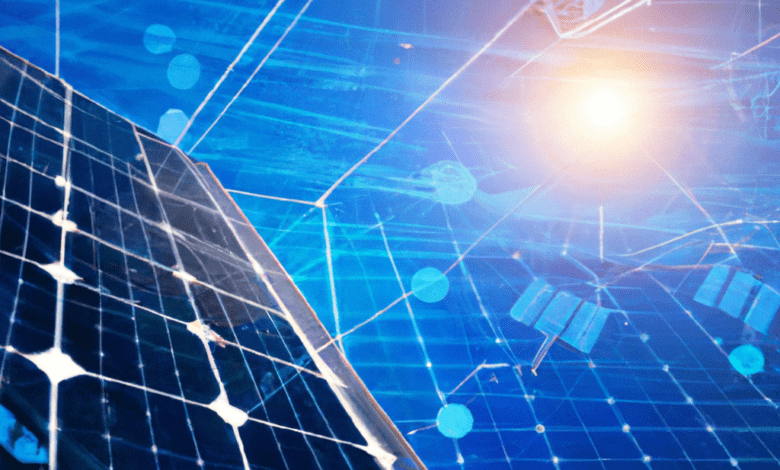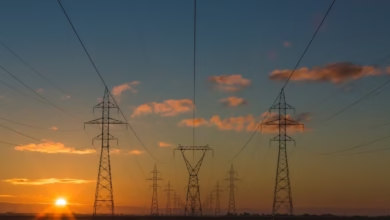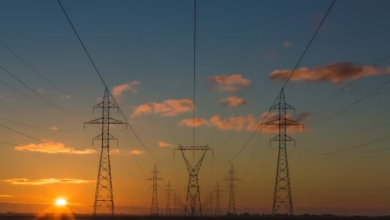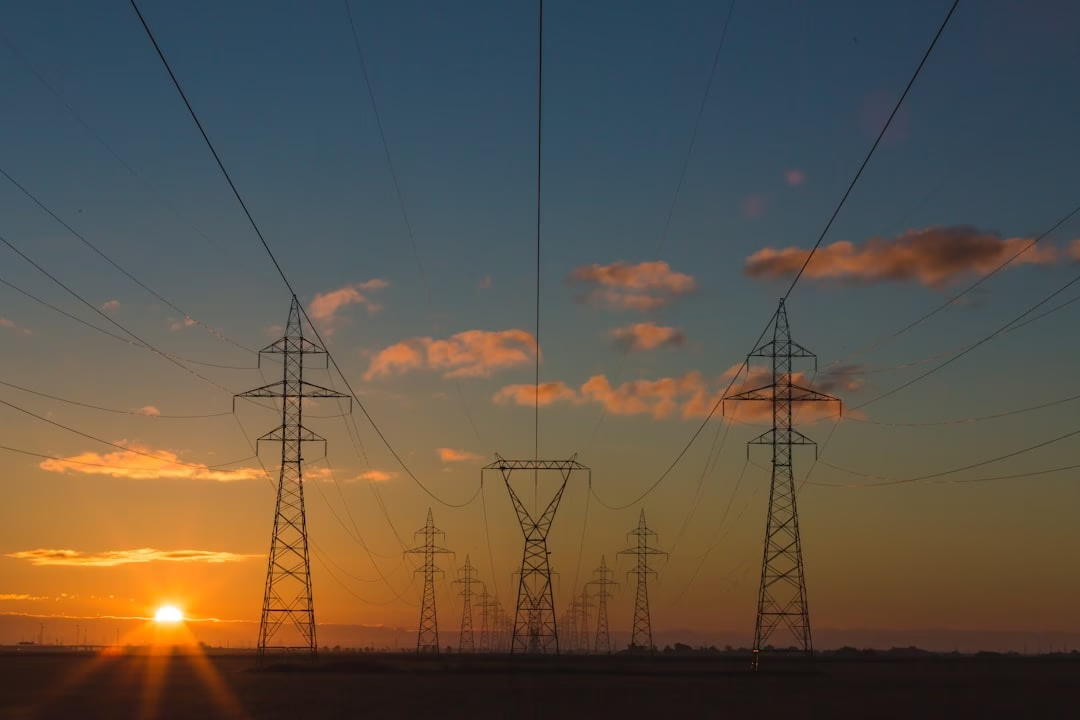Powering Savings: Unleashing Innovations in Energy Efficiency for a Sustainable Future

In an era where the dual challenges of rising energy costs and environmental sustainability are at the forefront of global discourse, innovations in energy efficiency are emerging as a beacon of hope. As businesses and households alike grapple with the financial implications of energy consumption, groundbreaking technologies and strategies are redefining how we harness and utilize energy. From smart grids to advanced insulation materials, these innovations not only promise to revolutionize energy use but also offer significant potential for cost savings. This article delves into the transformative breakthroughs that are driving efficiency, explores how these advancements can lead to substantial reductions in operational expenses, and examines sustainable solutions that ensure long-term savings for both the economy and the planet. Join us as we uncover the myriad ways in which energy efficiency innovations are shaping a more sustainable and cost-effective future.
- 1. **Revolutionizing Energy Use: Breakthrough Technologies Driving Efficiency**
- 2. **The Bottom Line: How Energy Efficiency Innovations Slash Operational Costs**
1. **Revolutionizing Energy Use: Breakthrough Technologies Driving Efficiency**
In recent years, a wave of breakthrough technologies has emerged, fundamentally transforming the landscape of energy efficiency. These innovations not only promise to reduce energy consumption but also pave the way for significant cost savings across various sectors.
One of the most impactful advancements can be seen in smart grid technology, which enhances the efficiency of electricity distribution. By integrating digital communication tools, smart grids allow for real-time monitoring and management of energy flow. This capability enables utilities to optimize energy delivery, reduce losses during transmission, and accommodate renewable energy sources more effectively. As a result, consumers can benefit from lower electricity bills and increased reliability of power supply.
Another area of innovation is in building management systems (BMS). Modern BMS utilize Internet of Things (IoT) devices to collect data on energy usage, occupancy, and environmental conditions. Through advanced analytics and machine learning, these systems can adjust heating, cooling, and lighting in real time, ensuring that energy is used only when and where it is needed. This level of automation not only enhances comfort but also leads to substantial reductions in energy waste and costs.
Moreover, advancements in energy-efficient appliances and equipment, such as LED lighting and high-efficiency HVAC systems, continue to play a crucial role. These products are designed to consume significantly less energy than their traditional counterparts while delivering the same or improved performance levels. For instance, LED bulbs use up to 80% less energy than incandescent bulbs and have a much longer lifespan, translating to lower replacement costs and reduced energy expenditures over time.
In the realm of transportation, electric vehicles (EVs) and their accompanying charging infrastructure are revolutionizing energy use in personal and commercial transport. As battery technology advances, EVs become increasingly cost-effective and accessible, reducing dependence on fossil fuels and contributing to lower operational costs for consumers and businesses alike. The integration of renewable energy sources into EV charging stations further amplifies these savings, as users can harness solar or wind energy to charge their vehicles at minimal costs.
Finally, the emergence of energy storage technologies, such as advanced batteries, is enabling greater efficiency by allowing excess energy generated during low-demand periods to be stored and used when demand peaks. This capability not only helps balance supply and demand but also enhances the overall resilience of the energy grid, leading to further cost savings for both utilities and consumers.
Together, these breakthrough technologies are not just enhancing energy efficiency; they are creating a sustainable framework for future energy use that prioritizes cost savings and environmental stewardship. As these innovations continue to evolve, they hold the promise of a more energy-efficient world, one that significantly benefits both the economy and the planet.
In recent years, innovations in energy efficiency have emerged as a pivotal factor in reducing operational costs for businesses and households alike. These advancements span a wide array of technologies and practices that not only enhance energy performance but also contribute to significant cost savings.
One of the most notable developments is the rise of smart technologies, including smart meters and home automation systems. These devices allow users to monitor and manage their energy consumption in real-time, leading to more informed decisions about energy use. For example, smart thermostats can learn a user’s habits and adjust heating or cooling accordingly, optimizing energy usage while minimizing waste.
Additionally, energy-efficient appliances have made substantial strides in reducing energy consumption. Innovations such as LED lighting, Energy Star-rated appliances, and high-efficiency HVAC systems consume considerably less energy than their conventional counterparts. These products not only lower utility bills but often come with rebates and incentives that can further enhance their cost-effectiveness.
Building design is another area where energy efficiency innovations are making a significant impact. The integration of sustainable materials, improved insulation, and energy-efficient windows can drastically reduce heating and cooling demands. Furthermore, the adoption of passive design principles, which leverage natural light and ventilation, can decrease reliance on artificial energy sources, resulting in lower energy expenditures.
Renewable energy integration, such as solar panels and wind turbines, also plays a crucial role in energy efficiency. By generating power on-site, businesses and homeowners can reduce their dependence on traditional energy sources, leading to substantial long-term savings. Moreover, advancements in battery storage technology are allowing for better energy management, enabling users to store excess energy generated during peak production times for later use.
The potential for cost savings through energy efficiency innovations is not limited to individual users; entire industries stand to benefit. Manufacturing processes are increasingly adopting energy-efficient technologies, such as variable frequency drives and energy recovery systems, which can lead to a dramatic reduction in energy costs. As companies increasingly recognize the importance of sustainability, energy efficiency measures are becoming integral to corporate strategy, often resulting in improved profitability and competitiveness.
In conclusion, the innovations in energy efficiency are transforming the landscape of energy consumption. By embracing these advancements, individuals and organizations can achieve significant cost savings while contributing to a more sustainable future. As technology continues to evolve, the potential for further improvements in energy efficiency will likely unlock even greater opportunities for financial and environmental benefits.
2. **The Bottom Line: How Energy Efficiency Innovations Slash Operational Costs**
In today's competitive landscape, businesses are continually seeking ways to optimize their operations and reduce expenses. Innovations in energy efficiency have emerged as a powerful solution to slash operational costs while simultaneously promoting sustainability. By adopting advanced technologies and practices, organizations can significantly decrease their energy consumption, leading to substantial savings on utility bills.
One of the most impactful innovations in energy efficiency is the integration of smart building technologies. These systems utilize sensors, IoT devices, and data analytics to monitor and manage energy usage in real-time. For instance, smart thermostats can automatically adjust heating and cooling based on occupancy patterns, ensuring that energy is not wasted in unoccupied spaces. Similarly, automated lighting systems can dim or turn off lights in areas that are not in use, further reducing energy consumption. By leveraging these technologies, businesses can achieve energy savings of 20% to 50%, translating to considerable reductions in operational costs.
Additionally, the adoption of energy-efficient equipment and appliances plays a crucial role in minimizing expenses. Upgrading to Energy Star-rated machinery, HVAC systems, and refrigeration units not only lowers energy usage but also often comes with tax incentives or rebates. Over time, the initial investment in energy-efficient equipment can be recouped through lower energy bills, leading to a positive return on investment.
Furthermore, innovative energy management systems allow organizations to track their energy usage patterns and identify areas for improvement. By analyzing this data, companies can implement targeted strategies to enhance efficiency, such as conducting energy audits, optimizing schedules, and investing in renewable energy sources. These proactive measures can lead to a more sustainable operational model that not only cuts costs but also enhances a company's brand reputation in an increasingly eco-conscious market.
In conclusion, the bottom line is clear: embracing energy efficiency innovations is not just an environmental imperative, but a strategic financial decision. By reducing energy consumption and operational costs, businesses can improve their profitability while contributing to a more sustainable future. The potential for significant cost savings makes energy efficiency a key consideration for any organization looking to enhance its financial performance and overall resilience.
In conclusion, the innovations in energy efficiency discussed throughout this article highlight a transformative shift in how we approach energy consumption and cost management. Breakthrough technologies are not only revolutionizing energy use but are also paving the way for substantial operational savings across various sectors. By embracing these advancements, businesses and individuals alike can significantly reduce their energy expenditures while contributing to a more sustainable future. The potential for cost savings is compelling, and as these technologies continue to evolve, the benefits will only increase. By prioritizing energy efficiency, we can create a win-win scenario—lowering costs while promoting environmental stewardship. As we move forward, it is imperative to stay informed and engaged with these innovations, ensuring that we harness their full potential for a more energy-efficient and economically viable tomorrow.





